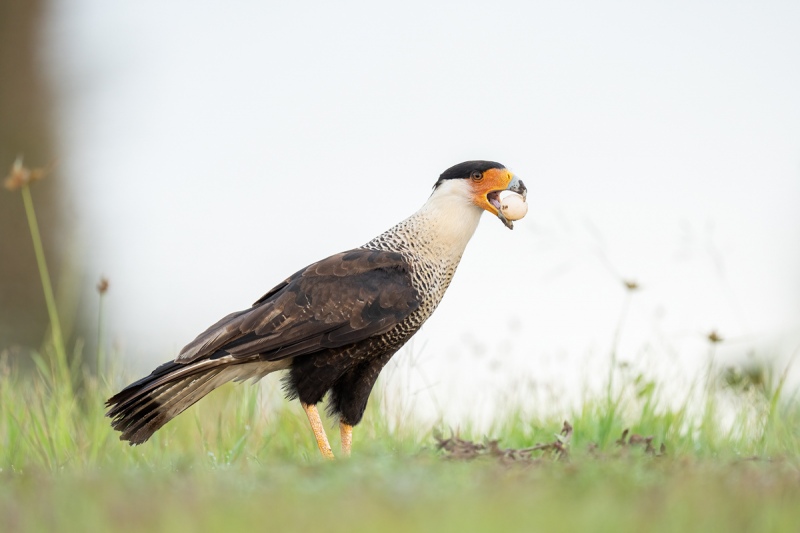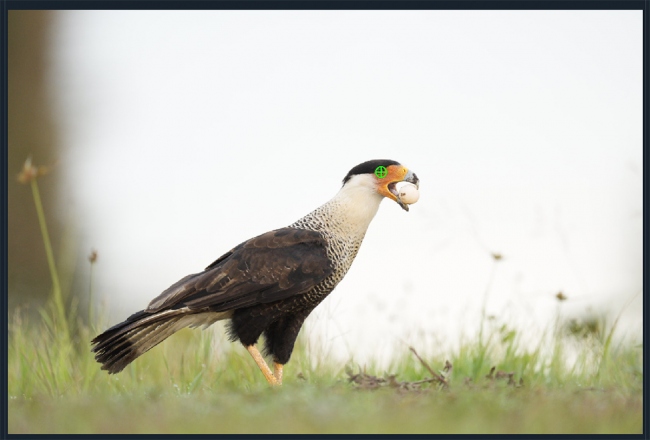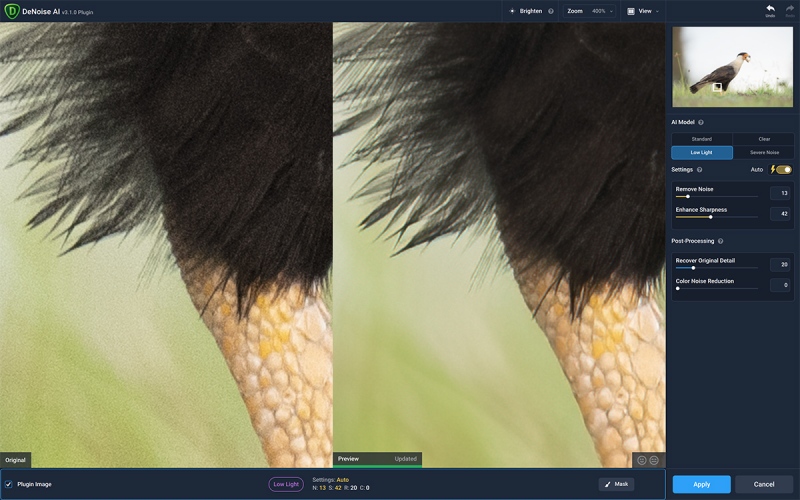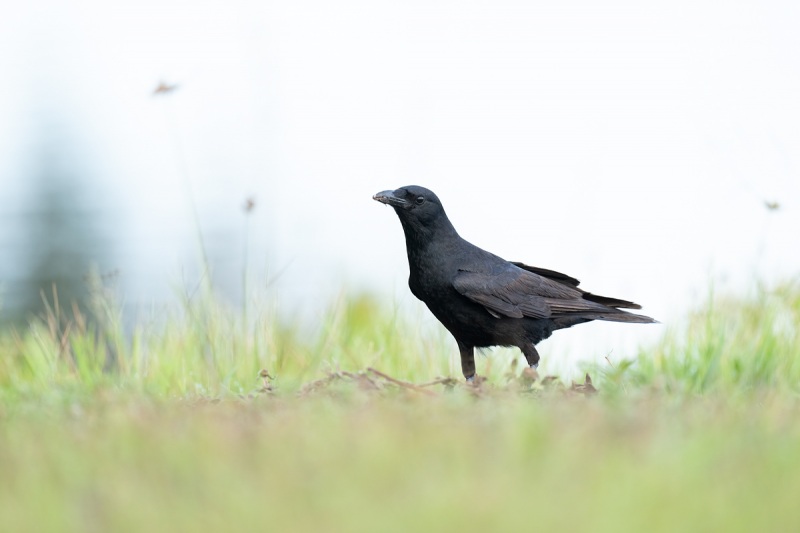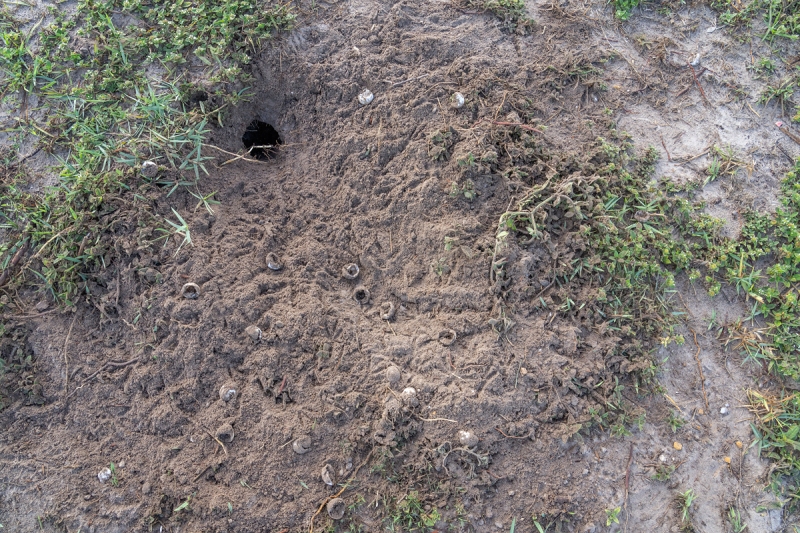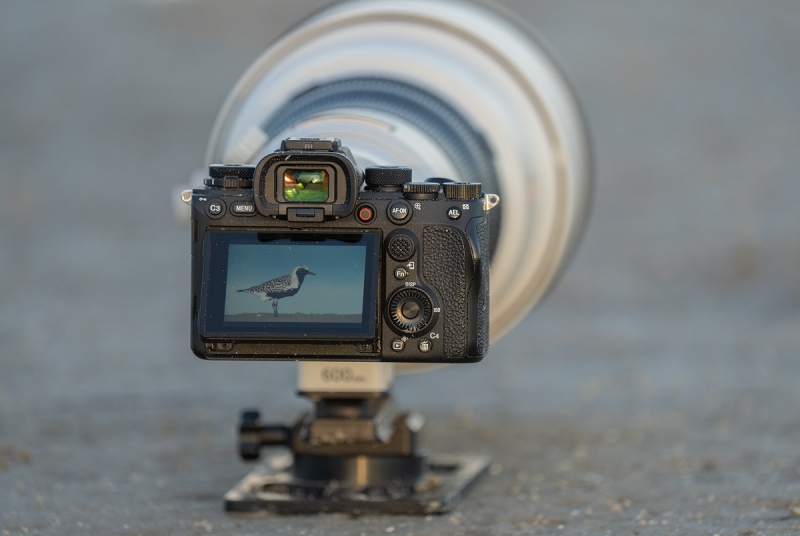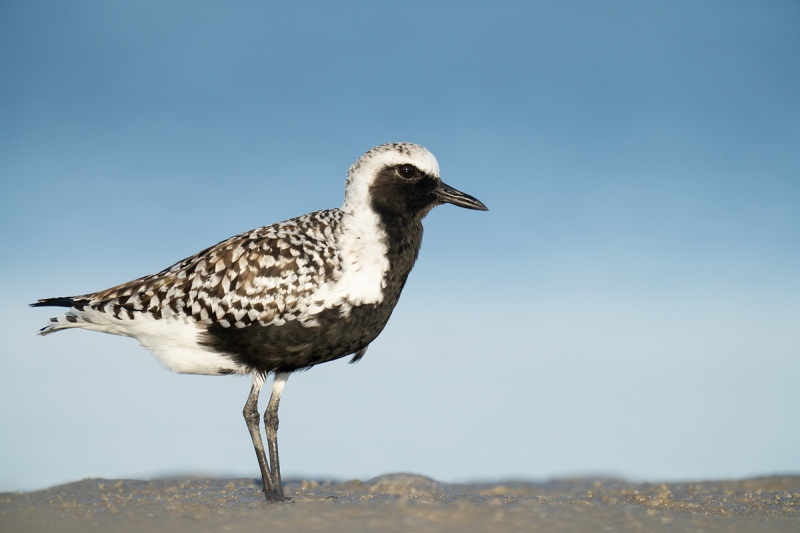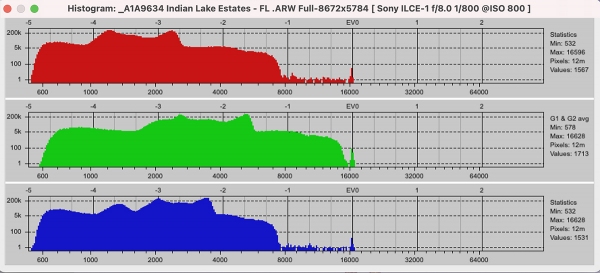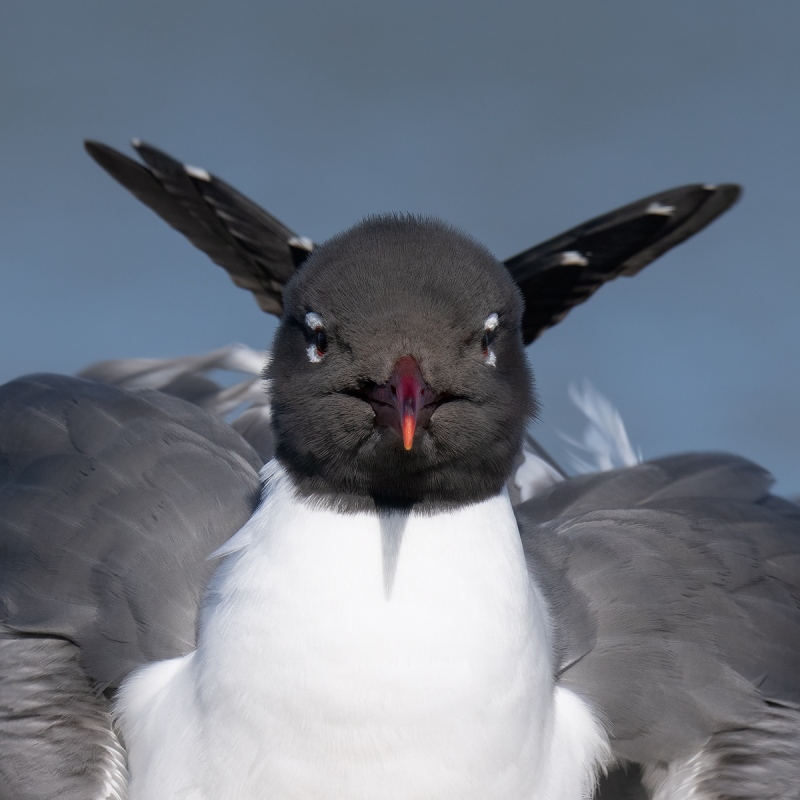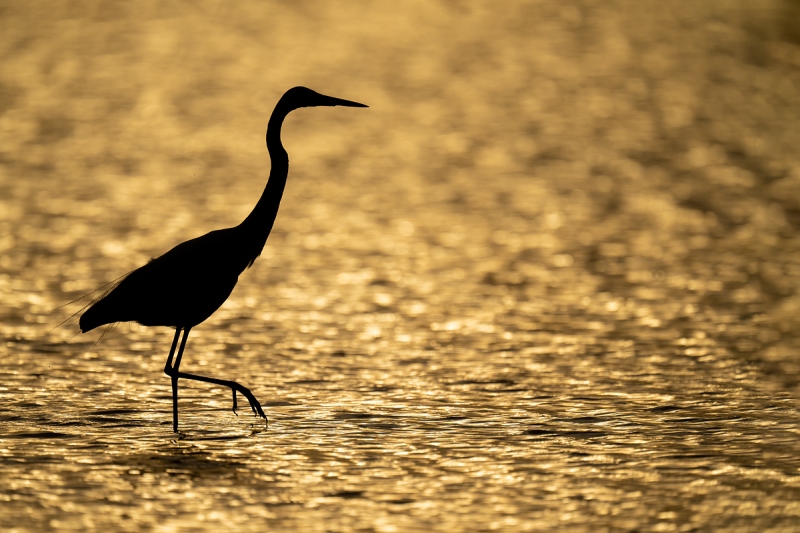June 9th, 2021 What’s Up?
Tuesday morning was lovely with clear skies and a breeze from the east. Aside from the crane families, there was not much around. Again, one of the adults was sitting on the pretty Black-necked Stilt nest (as seen through my Leica 8×32 Trinovid HD binoculars while in my car on the South Peninsula). You know that bird photography at ILE is starting to slow down when I start looking for flowers, and that is exactly what I’ve been doing for the past few mornings …
I spent all of yesterday creating — and finally, late in the day, sending e-mail #16 for the SONY a1 Info and Updates group. The following topics were covered: Monitor and Viewfinder Display options, all Custom Key Settings, Manual Focus Magnification, and Focus Peaking. I you own or have decided to get the world’s best bird photography camera body, scroll down to learn about getting into the group. And yes, using my one of my affiliate links is the way to go as it includes a free pass into the group.
Be sure to scroll all the way down to see the final image. It is entitled, The scene of the carnage.
Today is Wednesday 9 June. The forecast for ILE is for mostly sunny with a gentle east/southeast breeze in the morning and afternoon temps in the low nineties. Accompanied by the usual high humidity. I will head down to the lake for a bit after I finish this blog post and then continue work on the Nikonians webinar slide program. Wherever you are, and whatever you are doing, I hope that you have a great day.
This blog post took about two hours to prepare, and makes 165 consecutive days with a new one. Please remember that if an item — a Delkin flash card, or a tripod head — for example, that is available from B&H and/or Bedfords and is also available in the BAA Online Store, it would be great if you opt to purchase from us. We will match any price. Please remember also to use my B&H affiliate links or to save 3% at Bedfords by using the BIRDSASART discount code at checkout. Doing either often earns you free guides and/or discounts. And doing so always earns my great appreciation.
FlexShooter Pro News
Along with the FlexShooter Pro and the FlexShooter Mini, the Levered-Clamp FlexShooter Pro is finally back in stock. Here. Tomorrow the brand new Levered-Clamp FlexShooter Mini will, by popular demand, be in the BAA Online Store. We only have six Levered-Clamp FlexShooter Minis in stock. To be sure of getting one, it would be best to order yours right now by calling Jim in the office at 863-692-0906. They will sell for $669.00. The Levered-Clamp Mini will be perfect for all mid-range telephotos and telephoto zoom lenses, and the levered-clamp is a huge improvement over the original versions with a knob.
Please Remember
With income from IPTs now close to zero, please, if you enjoy and learn from the blog, remember to use one of my two affiliate programs when purchasing new gear. Doing so just might make it possible for me to avoid having to try to get a job as a Walmart greeter and will not cost you a single penny more. And if you use Bedfords and remember to enter the BIRDSASART code at checkout, you will save 3% on every order and enjoy free second-day air shipping. In these crazy times — I am out at least forty to sixty thousand dollars so far due to COVID 19 (with lots more to come) — remembering to use my B&H link or to shop at Bedfords will help me out a ton and be greatly appreciated. Overseas folks who cannot order from the US because of import fees, duties, and taxes, are invited to help out by clicking here to leave a blog thank you gift if they see fit.
New and Better Bedfords Discount Policy!
You can now save 3% on all of your Bedfords photo gear purchases by entering the BIRDSASART coupon code at checkout. Your discount will be applied to your pre-tax total. In addition, by using the code you will get 2nd day air shipping via Fed Ex.
Grab a Nikon AF-S Teleconverter TC-14E III and save $14.99. Purchase a Canon EOS R5 and your discount will be $116.97. Purchase a Sony FE 600mm f/4 GM OSS lens and save a remarkable $389.94! Your Bedford’s purchase no longer needs to be greater than $1,000.00 for you to receive a discount. The more you spend, the more you save.
Money Saving Reminder
Many have learned that if you need a hot photo item that is out of stock at B&H and would enjoy free second-day air shipping, your best bet is to click here, place an order with Bedfords, and enter the coupon code BIRDSASART at checkout. If an item is out of stock, contact Steve Elkins via e-mail or on his cell phone at (479) 381-2592 (Central time). Be sure to mention the BIRDSASART coupon code and use it for your online order to save 3% and enjoy free 2nd-day air shipping. Steve has been great at getting folks the hot items that are out of stock at B&H and everywhere else. The wait lists at the big stores can be a year or longer for the hard to get items. Steve will surely get you your gear long before that. For the past year, he has been helping BAA Blog folks get their hands on items like the SONY a9 ii, the SONY 200-600 G OSS lens, the Canon EOS R5, the Canon RF 100-500mm lens, and the Nikon 500mm PF. Steve is personable, helpful, and eager to please.


Gear Questions and Advice
Too many folks attending BAA IPTs (remember those?) and dozens of photographers whom I see in the field and on BPN, are–out of ignorance–using the wrong gear especially when it comes to tripods and more especially, tripod heads… Please know that I am always glad to answer your gear questions via e-mail.
|
|
|
This image was created from the driver’s seat of my SUV at ILE on 6 June 2021. I used the BLUBB-mounted Sony FE 600mm f/4 GM OSS lens and The One, the Sony Alpha 1 Mirrorless digital camera. ISO 1600. Exposure determined via Zebras with ISO on the rear dial: 1/500 sec. at f/4 (wide open) in Manual mode. AWB at 7:06am on a cloudy-dark morning.
Wide/AF-C was active at the moment of exposure performed perfectly by nailing and tracking the bird’s eye. Click on the image to see a larger version.
Image #1: Crested Caracara with turtle egg
|
Perfection?
I drove past the caracara, made a u-turn, and saw the bird with an egg in its bill. My first thoughts were that it had raided a bird’s nest and that I needed to make an image as quickly as possible. With the big lens alone (i.e., no TC) in the very low light, I placed the lens on the BLUBB on the lowered driver’s side window before approaching so that I would not flush the bird by raising the lens and sticking it out the window.
I had pre-set the shutter speed to 1/500 second and the aperture to the wide open f/4. Driving at all less than 1 mph, I stopped the car so that reflection of the tree on the other side of the canal would act as a frame on the left. I dialed the ISO up until there were lots of Zebras on the water. I acquired focus instantly; the bird seemed as curious about what I was doing as I was about what it was doing. Miraculously, it posed for an eight-frame sequence (all with a perfect head angle) before taking flight.
I followed it to the North Field and watched it enjoy its breakfast. When it was done, I got out of the car, found the small bit of egg shell, and picked it up. It was wet and leathery so I quickly realized that it was a turtle egg.
I returned to the scene of the crime. The caracara had beaten me back to the spot and proceeded to stick its head deeply into what I thought was the nest hole. The bird did not come up with another egg and flew off.
|
|
Image #1A: AF point screen capture for the Crested Caracara with turtle egg image
|
FWIW
As regular readers know, I used the Canon R5 extensively for several months. For what it’s worth, I can say that the Face Detection and Bird Eye Tracking system of the Sony Alpha a1 (when set up properly) is second to none. It is interesting to note that the next Canon mirrorless body, promises less “rolling shutter” distortion during Electronic Shutter operation, still-image shooting at speeds up to 30 fps, enhanced eye detection AF that will offer new recognizable subjects for its AF system, and with Face Detect + Tracking active, a camera that will follow moving subjects around the entire active AF area. Pardon me for saying that all of that very sounds familiar to Sony Alpha a1 users …
|
|
Image #1B: Topaz DeNoise on the Crested Caracara with turtle egg image
|
Low Light Amazing!
As with pretty much every image that I process, this image was run through Topaz DeNoise AI as the first step after the raw conversion. I’ve gotten to the point where I have so much confidence using Low Light on Auto for images made in low light at relatively high ISO settings, that I no longer check out the Comparison View. This saves me time. Be sure to click on the image to see the complete elimination of noise (especially in the BKGR) with no loss of fine detail in the feathers or the scutes on the caracara’s leg.
Great Topaz News!
Folks who use the BAA Topaz link to purchase Sharpen AI, DeNoise AI, or the Utility Bundle (or any other Topaz plug-ins), will receive a 15% discount by entering the ARTHUR15 code at checkout. If the stuff is on sale (as it usually is), you save 15% off of the sale price! To get the discount you must use my link and you must enter the discount code. Be sure to start with this link.
Those who purchase Sharpen AI, DeNoise AI, or any other Topaz plug-ins using my link and then entering the ARTHUR15 code at checkout can e-mail to request a short Getting Started with Topaz e-Guide. Please include a copy of your Topaz receipt that shows the discount. Aside from the basics, the guide explains how to install the plug-ins so that they appear in the Photoshop Filter Menu.
|
|
|
This image was also created from the driver’s seat of my SUV at ILE on 6 June 2021. I used the BLUBB-mounted Sony FE 600mm f/4 GM OSS lens and The One, the Sony Alpha 1 Mirrorless digital camera. ISO 1600. Exposure determined via Zebras with ISO on the rear dial: 1/640 sec. at f/4 (wide open) in Manual mode. AWB at 7:28am on a cloudy morning.
Wide/AF-C was active at the moment of exposure performed perfectly by nailing and tracking the bird’s eye. Click on the image to see a larger version.
Image #2: Fish Crow scavenging egg shells at predated turtle nest
|
Clean-up Artist
When the caracara left, several fish crows came in to tidy up and scavenge the eggshell scraps.
Exposure Question
The light levels had increased by the time I got back but it was still plenty cloudy. Despite the similar conditions, I went with a lot more Zebras on the water for the crow image than I had for the caracara image. Why?
|
|
Image #2A: AF point screen capture for the Fish Crow scavenging egg shells at predated turtle nest image
|
You-Gotta-Be-Kidding-Me Eye Detection AF
How can an AF system detect a black eye on a black head in low light conditions? Beats me, but the a1 does it consistently and easily. As long as the camera body is set up correctly and you understand how to use it.
One Amazing Thing …
One amazing thing — as explained in the a1 Info and Updates e-mails, is that the AF system of the a1 — when set up correctly, will actually detect a bird’s eye before you half-press the shutter button . And to think that I’d always dreamed of science-fiction-like autofocus …
Sony Alpha a1 AF
Barring operator error, the performance of the Sony Alpha a1 AF system at any focal length — including 1200mm as seen in recent blog posts — is, when the a1 is set up properly as detailed in the in e-mails to the Sony Alpha a1 Info & Updates group, more than remarkable. Early on, there was lots of discussion within the group with many preferring multiple back button approaches. For me a simple shutter button approach with the right AF settings that yield 99% sharp-on-the-eye images is best. By far. It is super-simple and mega-effective. In the next SONY Alpha a1 Set-up and Info Group e-mail, I will be sharing what I have learned as to when and in what situations it is best to abandon Wide. And with what. The group has already learned to limit the AF Area choices and to switch AF Areas quickly and conveniently. The default method of switching AF points with the C2 button is both slow and cumbersome.
SONY Alpha a1 Set-up and Info Group
The SONY Alpha a1 Set-up and Info Group is going great guns as folks chime in with thoughtful questions and experience-based advice. We are now up to an astounding 46 lucky folks. Early on, we discussed the myriad AF options. I gave my opinion as to the best one for flight and general bird photography. More recently, we have been in contact with folks at SONY sharing our thoughts, experiences, and frustrations with the EVF blackout problem.
All who purchased their Alpha a1 bodies via a BAA affiliate link will receive a free subscription to the Sony Alpha a1 Set-Up and Info Updates after shooting me their receipts via e-mail. (Note: it may take me several days to confirm B&H orders.) This same service may be purchased by anyone with an a1 body via a $150.00 PayPal sent to birdsasart@verizon.net indicating payment for Alpha a1 Info Updates. Alternatively, folks can call Jim weekdays at 1-863-692-0906 to pay via credit card. New members will receive composite e-mails that summarize all previous discussions.
|
|
|
This image was created on 6 June 2021 at ILE. I used the hand held Sony FE 24-105mm f/4 lens at 24mm and The One, the Sony Alpha 1 Mirrorless Digital Camera (Body Only). AUTO ISO 800. The exposure was determined by Zebras with ISO on the rear wheel: 1/60 sec. at f/8 (stopped down to stops) in Manual mode. AWB at 7:34am with on a cloudy morning.
Tracking: Expand Spot/AF-C was active at the moment of exposure and performed perfectly. Click on the image to enjoy a larger version
Image #3: The scene of the carnage
|
The Scene of the Carnage
When I got out of the car to view the scene of the carnage, I wondered if the circular hole, about two inches in diameter and at least six to eight inches deep, was a result of the turtle nest hatching. So I called BAA Blog turtle expert Matthew Milnes, a biology professor who has spent most of his career studying the physiology of reptiles. He grew up in FL. His response opened my eyes: “The hole is the classic sign of predation by a ground mammal such as a raccoon, an opossum, a fox, or a skunk.” As I have never seen (or smelled a road-killed) skunk here at ILE, it is likely that the nest was predated in the dark by one of the other three — probably by a raccoon as they are very common here. Once it began to get light, the birds flew in to join in the feast. I got in on the show at the tail end of things.
Noting the large numbers of eggshells scattered about, Matt thinks that this nest was likely from a Peninsular Cooter, a Common Snapping Turtle, or a Florida Soft-shelled Turtle. As I have said here before the breadth of the knowledge of folks here on the blog and their willingness to share it is staggering. Thanks again, Matt!
Typos
With all blog posts, feel free to e-mail or to leave a comment regarding any typos or errors.
June 8th, 2021 What’s Up?
It was indeed cloudy on Monday morning. I checked on and saw all three crane families but did not stop for any photography. I got out late as I was trying to solve a manual focus/magnification riddle with the SONY a1 body. Once I did that, I was hot to find a good macro subject. I went to my favorite Baton Rouge (pink lichen) oak tree but did not find anything interesting so I never got the camera out of the car. Nearby, I found a nice Sabatia blossom. I picked one flower and set it up in the lee of my SUV with two Plamps to keep it still in the breeze. No worries, the ILE Highway Department is constantly mowing and dredging all of the canals with and without flowers.
In any case, my solution worked perfectly. I will be sharing it (and lots more) with the SONY a1 Info and Updates group via e-mail today.
Speaking of which, today is Tuesday 8 June 2021. The forecast for ILE this morning is for clear skies with an east breeze. I will head down to the lake to see what I shall see. Wherever you are, and whatever you are doing, I hope that you have a great day.
This blog post took more than two hours to prepare, and makes 164 consecutive days with a new one. Please remember that if an item — a Delkin flash card, or a tripod head — for example, that is available from B&H and/or Bedfords and is also available in the BAA Online Store, it would be great if you opt to purchase from us. We will match any price. Please remember also to use my B&H affiliate links or to save 3% at Bedfords by using the BIRDSASART discount code at checkout. Doing either often earns you free guides and/or discounts. And doing so always earns my great appreciation.
Please Remember
With income from IPTs now close to zero, please, if you enjoy and learn from the blog, remember to use one of my two affiliate programs when purchasing new gear. Doing so just might make it possible for me to avoid having to try to get a job as a Walmart greeter and will not cost you a single penny more. And if you use Bedfords and remember to enter the BIRDSASART code at checkout, you will save 3% on every order and enjoy free second-day air shipping. In these crazy times — I am out at least forty to sixty thousand dollars so far due to COVID 19 (with lots more to come) — remembering to use my B&H link or to shop at Bedfords will help me out a ton and be greatly appreciated. Overseas folks who cannot order from the US because of import fees, duties, and taxes, are invited to help out by clicking here to leave a blog thank you gift if they see fit.
New and Better Bedfords Discount Policy!
You can now save 3% on all of your Bedfords photo gear purchases by entering the BIRDSASART coupon code at checkout. Your discount will be applied to your pre-tax total. In addition, by using the code you will get 2nd day air shipping via Fed Ex.
Grab a Nikon AF-S Teleconverter TC-14E III and save $14.99. Purchase a Canon EOS R5 and your discount will be $116.97. Purchase a Sony FE 600mm f/4 GM OSS lens and save a remarkable $389.94! Your Bedford’s purchase no longer needs to be greater than $1,000.00 for you to receive a discount. The more you spend, the more you save.
Money Saving Reminder
Many have learned that if you need a hot photo item that is out of stock at B&H and would enjoy free second-day air shipping, your best bet is to click here, place an order with Bedfords, and enter the coupon code BIRDSASART at checkout. If an item is out of stock, contact Steve Elkins via e-mail or on his cell phone at (479) 381-2592 (Central time). Be sure to mention the BIRDSASART coupon code and use it for your online order to save 3% and enjoy free 2nd-day air shipping. Steve has been great at getting folks the hot items that are out of stock at B&H and everywhere else. The wait lists at the big stores can be a year or longer for the hard to get items. Steve will surely get you your gear long before that. For the past year, he has been helping BAA Blog folks get their hands on items like the SONY a9 ii, the SONY 200-600 G OSS lens, the Canon EOS R5, the Canon RF 100-500mm lens, and the Nikon 500mm PF. Steve is personable, helpful, and eager to please.


Gear Questions and Advice
Too many folks attending BAA IPTs (remember those?) and dozens of photographers whom I see in the field and on BPN, are–out of ignorance–using the wrong gear especially when it comes to tripods and more especially, tripod heads… Please know that I am always glad to answer your gear questions via e-mail.
|
|
|
This image was created while seated at my favorite afternoon spot at Fort DeSoto. I used the versatile, hand held 200-600 (at 535mm) and the a1.
Image #1: 600 GM & 2X TC with the SONY a1 on the Panning Ground-Pod
|
Getting Sand and Mud on Your Expensive Camera Body
Yes, when working at ground level I routinely get sand and mud on my camera bodies, expensive and otherwise. When I am at the beach, I always have a soft paint brush in my fanny pack for quick but effective clean-ups. Getting your camera dirty is included in the price of admission for those wishing to create intimate, ultra-low perspective images of birds on the ground. You can always keep your gear clean by standing up and shooting down at your subjects …
How Low Can You Go?
On a flat beach, nothing beats the Panning Ground-Pod for getting low. The ground pod is not more than 1 1/2 inches tall and as its name implies, you can pan (smoothly and easily) with a moving subject.
Now you have two options:
- 1: Lying flat on the ground or the mud or the sand, allows you the greatest control as you have your eye to the viewfinder. For some — like me, it may involve back and neck strain. And you will get dirty for sure.
- 2- Sitting, and working on the tilted rear screen does not involve much strain or pain and the only thing getting dirty will be your butt unless you are sitting on some sort of pad. If you are sitting on a pad it will be much more difficult to change your position either to follow the birds or to get on sun angle. I do not recommend sitting on a milk crate when using the Panning Ground-Pod (as opposed to working off a fully-splayed, flattened tripod. Why? It will be a long way down to the camera body and it will be difficult to see the rear screen.
Sitting and working off the tilted rear screen has opened up whole new worlds for me. Wearing my reading glasses makes it a lot easier to see the rear monitor well. That said, you need to be able to trust your AF system. Panning with a moving subject and properly framing the image takes practice. Lots of practice. But the rewards are well worth it.
Note: as detailed in our SONY e-Guide and in the a1 Info and Updates e-mails, the high-end SONY body’s allow you to toggle the electronic level off and on. I do that quite often when working super-low to try and ensure that my images are square-to-the-world.
Picking a Subject
There were several Black-bellied Plovers on the beach. Some were in basic (winter) plumage, some were molting into breeding plumage, and one was in full breeding plumage with a complete jet-black belly. The black bellies of the females are splotchy. There is no way to know whether or not this individual bird made it up to the sub-Arctic to breed this season, but given the date — 10 May, it had plenty of time. Shorebirds can fly many thousands of miles in just several days.
In any case, this is the bird I chose to go after. First, I watched the bird from a distance and noted the pattern of his movements. Working at 1200mm (today’s featured image is un-cropped), I picked a spot with a nice stretch of relatively clean mud, got right on sun angle, sat well back, and waited for the subject to come to me. It did. And I had lots of great chances. After the second edit, this was the best of four similar keepers.
If you are going to do some work when going after a quality image, it only makes sense to go after the best-looking bird.
The Fort DeSoto Site Guide
Though a bit long in the tooth (like me), the Fort DeSoto Site Guide will get you to my two favorite morning spots and to my favorite afternoon spots as well. DeSoto is the rare location that has the potential> to offer great photography any day of the year.
|
|
Image #1B: The RawDigger adapted histogram for the Black-bellied Plover — male in full breeding plumage image
|
Dead-Solid-Perfect Always Works Well
Recently, we have been discussing the difference between perfect exposures, with the G channel ending at the line 2/3rds of the way from the 8000-line to the 16000-line, and dead-solid-perfect exposures where the G channel makes it all the way to the 16000 line. Dead solid perfect is always to be preferred with subjects with large dark or black areas to maximize the detail in the dark tones.
The tiny spikes in each channel represent exactly 406 OvExp pixels (out of 51,000,000), all those from the specular highlights on the bird’s bill and legs, and in the eye highlight. In addition, there is a very faint smattering of OvExp pixels on the brightest WHITEs of the bird’s breast. In the RawDigger e-Guide, we teach you why you want to ignore the over-exposed pixels in the specular highlights.
Via e-Mail from Geri George
Hi Artie, Thanks for the RawDigger e-Guide. With many of my flower images, DPP 4 shows lots of over-exposure on the petals, but RawDigger shows only a smattering (less than a hundred). They all converted perfectly in DPP 4 simply by pulling down the Highlight slider a bit. RawDigger has some really cool stuff!
Thanks and best, Geri
|
|
RawDigger e-Guide with Two Videos
|
The RawDigger e-Guide with Two Videos
by Arthur Morris with Patrick Sparkman
The RawDigger e-Guide was created only for serious photographers who wish to get the absolute most out of their raw files. It is not for the faint-of-heart who are happy to go through life under-exposing every raw file they create.
Patrick and I began work on the guide in July 2020. At first we struggled. We asked questions. We learned about Max-G values. We puzzled as to why the Max G values for different cameras were different. IPT veteran Bart Deamer asked lots of questions that we could not answer. We got help from RawDigger creator Iliah Borg. We learned. In December, Patrick came up with an Adapted Histogram that allows us to evaluate the exposures and raw file brightness for all images created with all digital camera bodies from the last two decades. What we learned each time prompted three complete beginning to end re-writes.
The point of the guide is to teach you to truly mega-Expose-to-the-Right so that you will minimize noise, maximize image quality, best utilize your camera’s dynamic range, and attain the highest possible level of shadow detail in your RAW files in every situation. In addition, your properly exposed RAW files will contain more tonal information and feature the smoothest possible transitions between tones. And your optimized images will feature rich, accurate color.
We teach you why the GREEN channel is almost always the first to over-expose. We save you money by advising you which version of RawDigger you need. We teach you how to interpret the Max G values for your Canon, Nikon, and SONY camera bodies. It is very likely that the Shock-your-World section will shock you. And lastly — thanks to the technical and practical brilliance of Patrick Sparkman — we teach you a simple way to quickly and easily evaluate your exposures and raw file brightness using an Adapted RawDigger histogram.
The flower video takes you through a session where artie edits a folder of images in Capture One while checking the exposures and Max-G values in RawDigger. The Adapted Histogram video examines a series of recent images with the pink histograms and covers lots of fine points including and especially how to deal with specular highlights. The directions for setting up the Adapted Histogram are in the text.
If we priced this guide based on how much effort we put into it, it would sell it for $999.00. But as this guide will be purchased only by a limited number of serious photographers, we have priced it at $51.00. You can order yours here in the BAA Online Store.
Typos
With all blog posts, feel free to e-mail or to leave a comment regarding any typos or errors.
June 7th, 2021 What’s Up?
I had an interesting morning photo session on Sunday. It was a bit cloudy with not much going on. As I drove south on the road next to the South Field, I saw a Crested Caracara digging around. I hung a u-turn, put the 600 f/4 on the BLUBB, and approached slowly. The caracara had an egg. Thinking “egg,” I wondered, “What type of bird’s egg?” I made some very good images in very low light. When the bird flew off, I followed and found it eating the egg on the ground in the North Field. When it flew off I got out of the car to investigate. I found the remainder of the shell. It felt wet and leathery. Mystery solved: the caracara had been digging up a turtle nest! Photo story here at some point.
I have been getting some work done on the Nikonians webinar, and in addition, consolidated the MAY 2021 folder. On Sunday, I began the second edit of 2258 raw files … I’ve been swimming and doing my bursts every day.
Today is Monday 7 June 2021. The forecast for this morning at ILE is for cloudy with an easterly breeze. I will be heading down to the lake for a bit. Wherever you are, and whatever you are doing, I hope that you have a great day.
This blog post took about 90 minutes to prepare, and makes 163 consecutive days with a new one. Please remember that if an item — a Delkin flash card, or a tripod head — for example, that is available from B&H and/or Bedfords and is also available in the BAA Online Store, it would be great if you opt to purchase from us. We will match any price. Please remember also to use my B&H affiliate links or to save 3% at Bedfords by using the BIRDSASART discount code at checkout. Doing either often earns you free guides and/or discounts. And doing so always earns my great appreciation.
Please Remember
With income from IPTs now close to zero, please, if you enjoy and learn from the blog, remember to use one of my two affiliate programs when purchasing new gear. Doing so just might make it possible for me to avoid having to try to get a job as a Walmart greeter and will not cost you a single penny more. And if you use Bedfords and remember to enter the BIRDSASART code at checkout, you will save 3% on every order and enjoy free second-day air shipping. In these crazy times — I am out at least forty to sixty thousand dollars so far due to COVID 19 (with lots more to come) — remembering to use my B&H link or to shop at Bedfords will help me out a ton and be greatly appreciated. Overseas folks who cannot order from the US because of import fees, duties, and taxes, are invited to help out by clicking here to leave a blog thank you gift if they see fit.
New and Better Bedfords Discount Policy!
You can now save 3% on all of your Bedfords photo gear purchases by entering the BIRDSASART coupon code at checkout. Your discount will be applied to your pre-tax total. In addition, by using the code you will get 2nd day air shipping via Fed Ex.
Grab a Nikon AF-S Teleconverter TC-14E III and save $14.99. Purchase a Canon EOS R5 and your discount will be $116.97. Purchase a Sony FE 600mm f/4 GM OSS lens and save a remarkable $389.94! Your Bedford’s purchase no longer needs to be greater than $1,000.00 for you to receive a discount. The more you spend, the more you save.
Money Saving Reminder
Many have learned that if you need a hot photo item that is out of stock at B&H and would enjoy free second-day air shipping, your best bet is to click here, place an order with Bedfords, and enter the coupon code BIRDSASART at checkout. If an item is out of stock, contact Steve Elkins via e-mail or on his cell phone at (479) 381-2592 (Central time). Be sure to mention the BIRDSASART coupon code and use it for your online order to save 3% and enjoy free 2nd-day air shipping. Steve has been great at getting folks the hot items that are out of stock at B&H and everywhere else. The wait lists at the big stores can be a year or longer for the hard to get items. Steve will surely get you your gear long before that. For the past year, he has been helping BAA Blog folks get their hands on items like the SONY a9 ii, the SONY 200-600 G OSS lens, the Canon EOS R5, the Canon RF 100-500mm lens, and the Nikon 500mm PF. Steve is personable, helpful, and eager to please.


Gear Questions and Advice
Too many folks attending BAA IPTs (remember those?) and dozens of photographers whom I see in the field and on BPN, are–out of ignorance–using the wrong gear especially when it comes to tripods and more especially, tripod heads… Please know that I am always glad to answer your gear questions via e-mail.
Laughing Gull as Devil Crop Quiz
In the Laughing Gull as Devil? blog post here, this was included:
Multiple Choice Crop Quiz
What percentage of the original frame does the optimized TIF file represent (as represented by the JPEG above)?
- a- 11%
- b- 22%
- c- 44%
- d- 66%
- e- 88%
|
|
|
Click on the screen capture for a better look at the histogram.
Image #1A RawDigger screen capture for the Laughing Gull as Devil? image
|
RawDigger Screen Capture shows the full frame original
Checking out the full frame original in the screen capture above shows that the Laughing Gull as Devil image was indeed a very large crop. Only 89% of the original pixels were represented in the JPEG that represented the master file, Image #1 above.
Two folks nailed it:
Yves Guillot: A pour moi aussi: 11%
Mark Jordan: Hi Artie. I’ll say A. 11%.
Ho Hum …
Same old, same old: another perfect exposure thanks to studying RawDigger. Note that the G channel makes it 2/3 of the way from the 8000 line to the 16000 line. Thanks to RawDigger, that is exactly what I aim for.
Via e-Mail from Geri George
Hi Artie, Thanks for the RawDigger e-Guide. With many of my flower images, DPP 4 shows lots of over-exposure on the petals, but RawDigger shows only a smattering (less than a hundred). They all converted perfectly in DPP 4 simply by pulling down the Highlight slider a bit. RawDigger has some really cool stuff!
Thanks and best, Geri
|
|
RawDigger e-Guide with Two Videos
|
The RawDigger e-Guide with Two Videos
by Arthur Morris with Patrick Sparkman
The RawDigger e-Guide was created only for serious photographers who wish to get the absolute most out of their raw files.
Patrick and I began work on the guide in July 2020. At first we struggled. We asked questions. We learned about Max-G values. We puzzled as to why the Max G values for different cameras were different. IPT veteran Bart Deamer asked lots of questions that we could not answer. We got help from RawDigger creator Iliah Borg. We learned. In December, Patrick came up with an Adapted Histogram that allows us to evaluate the exposures and raw file brightness for all images created with all digital camera bodies from the last two decades. What we learned each time prompted three complete beginning to end re-writes.
The point of the guide is to teach you to truly expose to the mega-Expose-to-the-Right so that you will minimize noise, maximize image quality, best utilize your camera’s dynamic range, and attain the highest possible level of shadow detail in your RAW files in every situation. In addition, your properly exposed RAW files will contain more tonal information and feature the smoothest possible transitions between tones. And your optimized images will feature rich, accurate color.
We teach you why the GREEN channel is almost always the first to over-expose. We save you money by advising you which version of RawDigger you need. We teach you how to interpret the Max G values for your Canon, Nikon, and SONY camera bodies. It is very likely that the Shock-your-World section will shock you. And lastly — thanks to the technical and practical brilliance of Patrick Sparkman — we teach you a simple way to quickly and easily evaluate your exposures and raw file brightness using an Adapted RawDigger histogram.
The flower video takes you through a session where artie edits a folder of images in Capture One while checking the exposures and Max-G values in RawDigger. The Adapted Histogram video examines a series of recent images with the pink histograms and covers lots of fine points including and especially how to deal with specular highlights. The directions for setting up the Adapted Histogram are in the text.
If we priced this guide based on how much effort we put into it, it would sell it for $999.00. But as this guide will be purchased only by a limited number of serious photographers, we have priced it at $51.00. You can order yours here in the BAA Online Store.
|
|
|
This image was created on 4 June 2021 at Fort DeSoto Park. I used the hand held Sony FE 600mm f/4 GM OSS lens with the Sony FE 1.4x Teleconverter and The One, the Sony Alpha 1 Mirrorless digital camera. ISO 200. Exposure determined via Zebras with ISO on the rear dial: 1/5000 sec. at f/5.6 (wide open) in Manual mode. AWB at 7:21am on with a bit of fog barely covering the sun.
Wide/AF-C was active at the moment of exposure and performed perfectly. Click on the image to see a larger version.
Great Egret backlit in sparkling golden water
|
Right Place + Right Time + Vision + Good Technique Usually Works Out Just Fine
Clemens was already lying in the sand trying for Least Terns and the Snowy Plover chicks. For whatever reasons, I did not feel like getting sandy and/or wet on our getaway morning. As I lagged behind him, I noted a Great Egret to my right feeding in a shallow bay just as the sun was breaking through the fog just a bit. I had been carrying the tripod in one hand and the big lens in the other. I decided that handholding would be best as I would have lots of shutter speed and would be able to more easily get into position. If the sun had been out fully there would have been no shot at all. But with the fog, there was a swatch of sparkling golden water. As the bird was walking to the south, the trick was to move slightly ahead of the bird and let it walk into the bright water.
I made about one hundred images in all, perhaps 6-10 each time that the bird walked into the golden zone. The first thirty or forty had an ugly sandbar in the foreground that showed up as black but that was a blessing as I was fine-tuning the exposure. As the bird made its way south, I moved a bit closer. This one — with one foot raised out of the water, was the best from the last series before the bird turned around and walked back to the north in front of the sandbar. Party over. At no time did I consider getting lower because that would have brought the far shoreline of the lagoon into the top of the frame as an ugly black border.
Typos
With all blog posts, feel free to e-mail or to leave a comment regarding any typos or errors.
|
|




